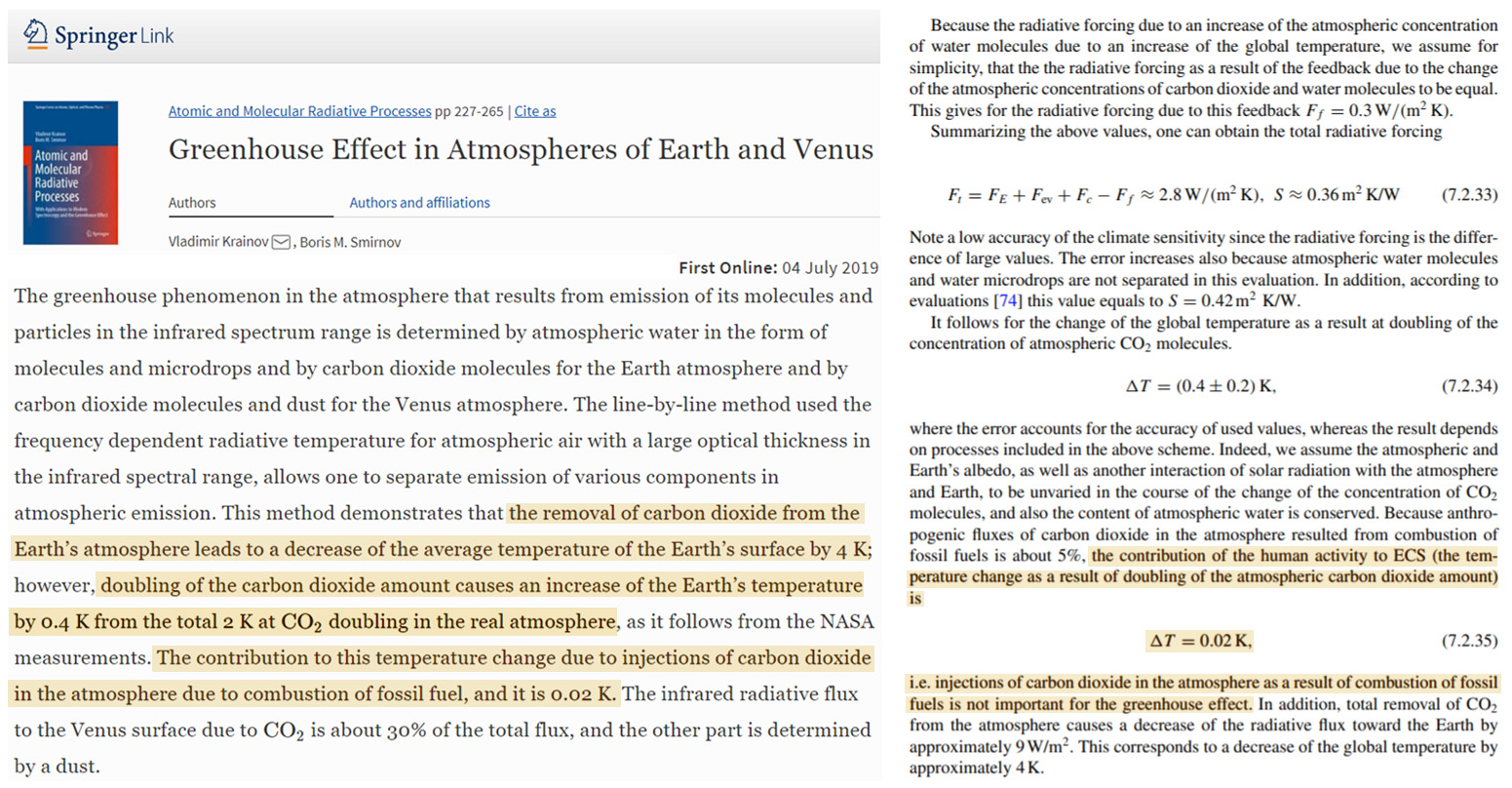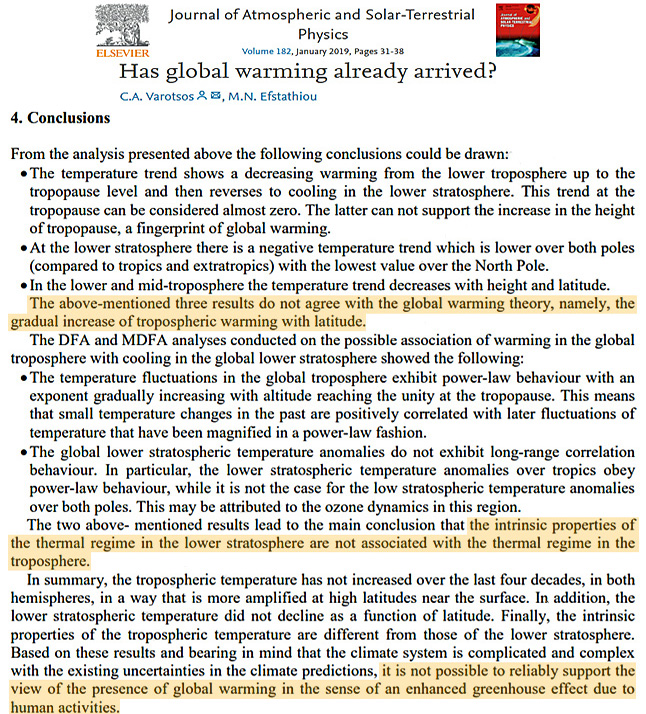By Kenneth Richard
Within the last few years, over 50 papers have been added to our compilation of scientific studies that find the climate’s sensitivity to doubled CO2 (280 ppm to 560 ppm) ranges from <0 to 1°C. When no quantification is provided, words like “negligible” are used to describe CO2’s effect on the climate. The list has now reached 106 scientific papers.
Link: 100+ Scientific Papers – Low CO2 Climate Sensitivity
A few of the papers published in 2019 are provided below.
Krainov and Smirnov, 2019 (2X CO2 = 0.4°C, 2X anthroCO2 = 0.02°C)
“The greenhouse phenomenon in the atmosphere that results from emission of its molecules and particles in the infrared spectrum range is determined by atmospheric water in the form of molecules and microdrops and by carbon dioxide molecules for the Earth atmosphere and by carbon dioxide molecules and dust for the Venus atmosphere. The line-by-line method used the frequency dependent radiative temperature for atmospheric air with a large optical thickness in the infrared spectral range, allows one to separate emission of various components in atmospheric emission. This method demonstrates that the removal of carbon dioxide from the Earth’s atmosphere leads to a decrease of the average temperature of the Earth’s surface by 4 K; however, doubling of the carbon dioxide amount causes an increase of the Earth’s temperature by 0.4 K from the total 2 K at CO2 doubling in the real atmosphere, as it follows from the NASA measurements. The contribution to this temperature change due to injections of carbon dioxide in the atmosphere due to combustion of fossil fuel, and it is 0.02 K. The infrared radiative flux to the Venus surface due to CO2 is about 30% of the total flux, and the other part is determined by a dust.”

Image Source: Krainov and Smirnov, 2019
Ollila, 2019 (2XCO2= 0.6°C)
“If a climate model using the positive water feedback were applied to the GH effect magnitude of this study, it would fail worse than a model showing a TCS value of 1.2°C. If there were a positive water feedback mechanism in the atmosphere, there is no scientific grounding to assume that this mechanism would start to work only if the CO2 concentration exceeds 280 ppm, and actually, the IPCC does not claim so. The absolute humidity and temperature observations show that there is no positive water feedback mechanism in the atmosphere during the longer time periods. … The contribution of CO2 in the GH effect is 7.3% corresponding to 2.4°C in temperature. The reproduction of CO2 radiative forcing (RF) showed the climate sensitivity RF value to be 2.16 Wm-2, which is 41.6% smaller than the 3.7 Wm-2 used by the IPCC. A climate model showing a climate sensitivity (CS) of 0.6°C matches the CO2 contribution in the GH effect, but the IPCC’s climate model showing a CS of 1.8°C or 1.2°C does not.”
Varotsos and Efstathiou, 2019
“The enhancement of the atmospheric greenhouse effect due to the increase in the atmospheric greenhouse gases is often considered as responsible for global warming (known as greenhouse hypothesis of global warming). In this context, the temperature field of global troposphere and lower stratosphere over the period 12/1978–07/2018 is explored using the recent Version 6 of the UAH MSU/AMSU global satellite temperature dataset. Our analysis did not show a consistent warming with gradual increase from low to high latitudes in both hemispheres, as it should be from the global warming theory. … Based on these results and bearing in mind that the climate system is complicated and complex with the existing uncertainties in the climate predictions, it is not possible to reliably support the view of the presence of global warming in the sense of an enhanced greenhouse effect due to human activities.”




